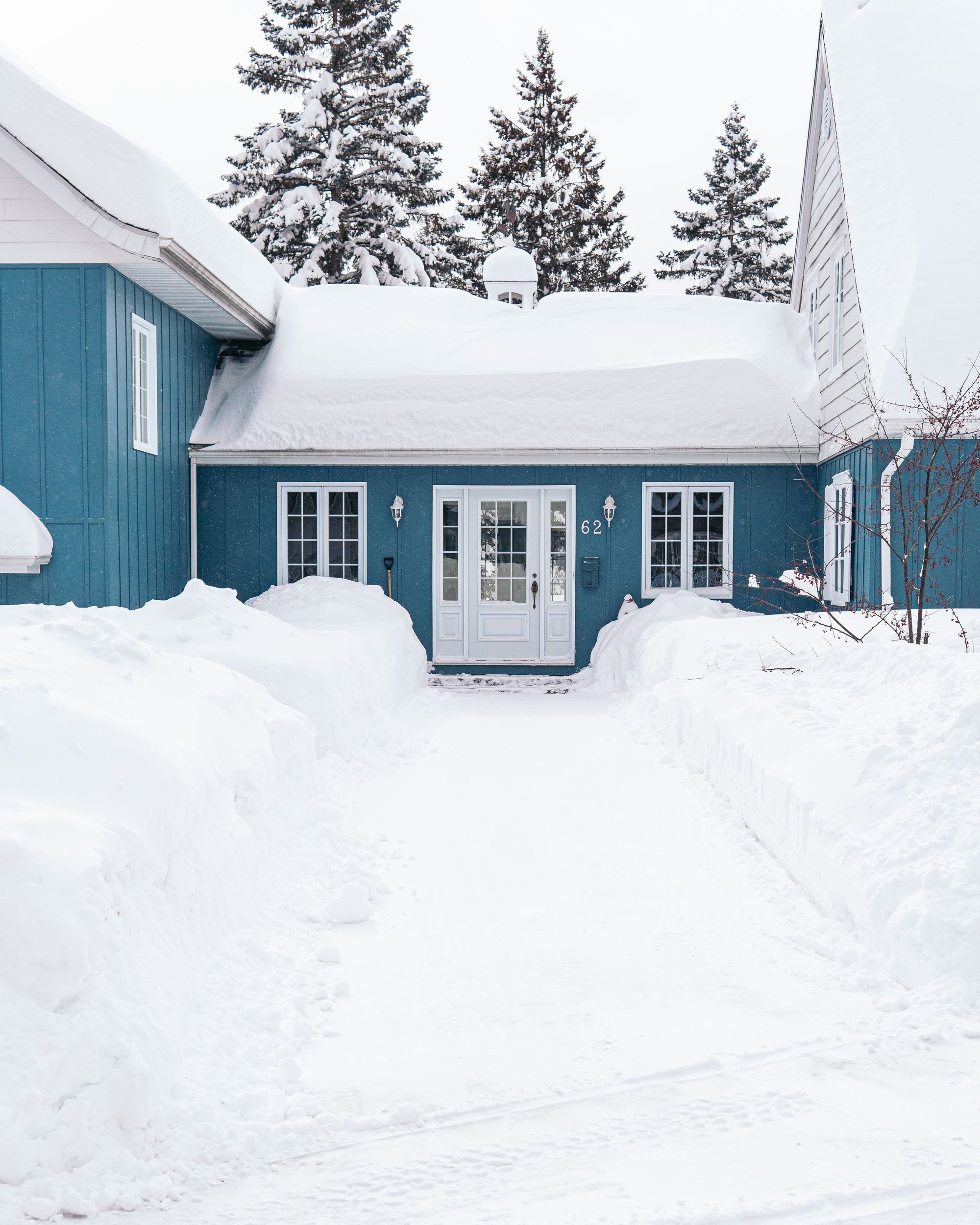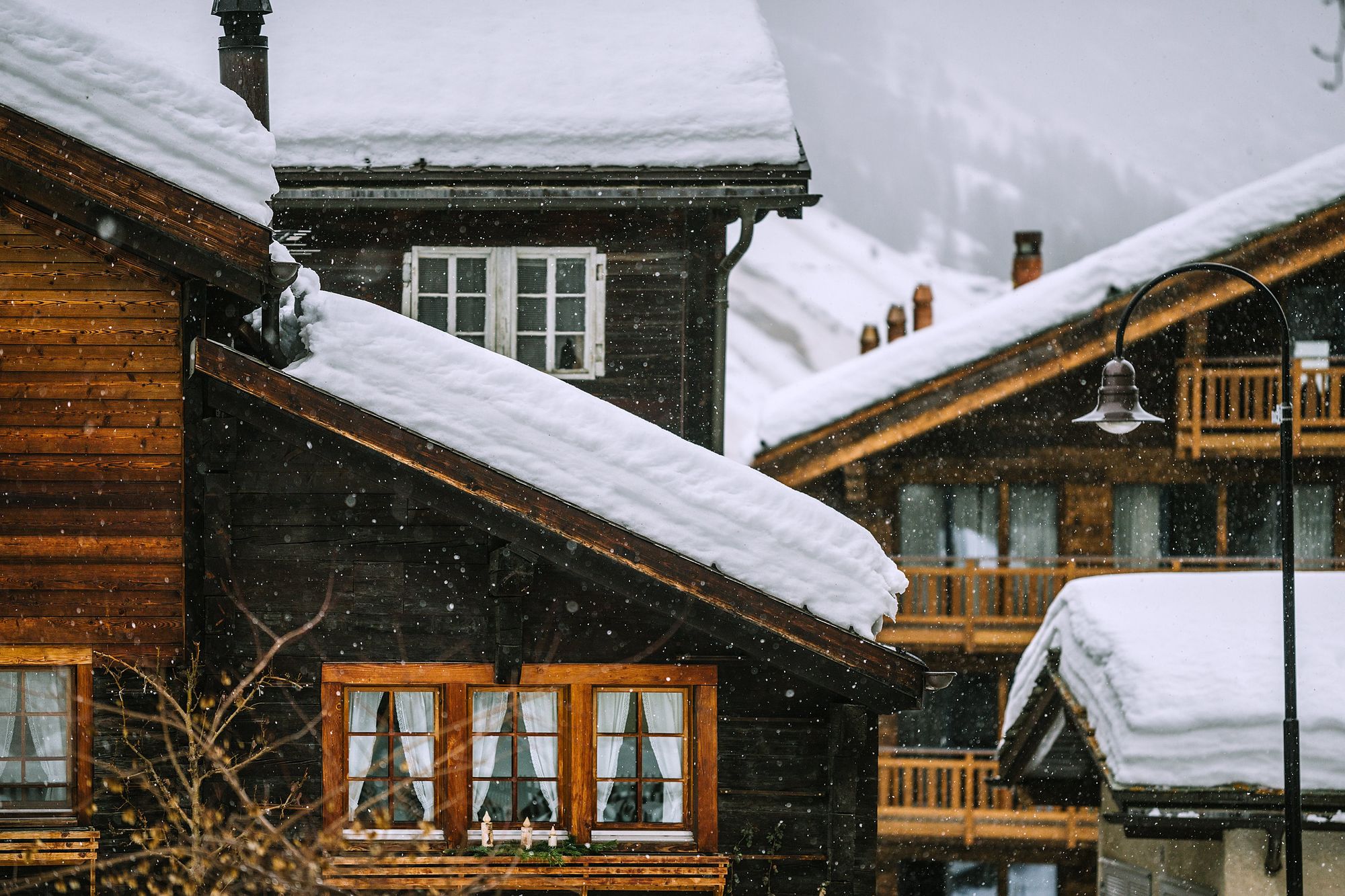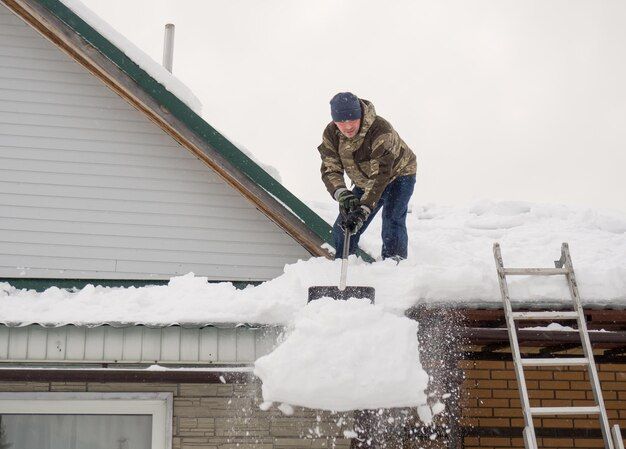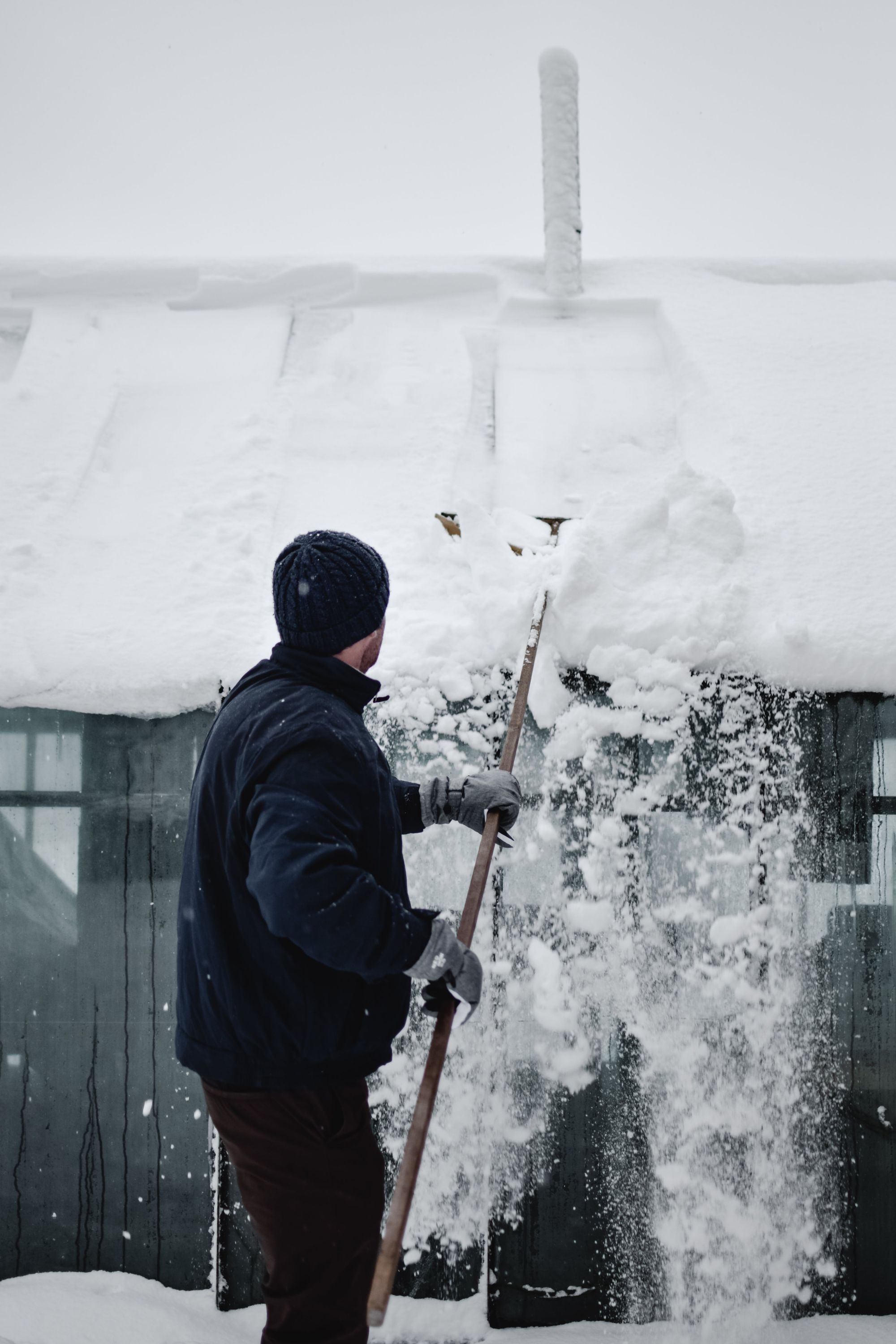Winter Roof Care: Your Ultimate Guide to Maintenance and Prevention
Preventing winter roof damage is a crucial aspect of home maintenance. The harsh conditions of winter can exacerbate existing issues and create new ones if your roof isn't properly prepared.

As the colder months approach, one of the most critical areas to focus on is your roof. It's your first line of defense against the harsh winter elements, and keeping it in top condition can save you from a lot of trouble and unnecessary expenses down the line. But what does proper cold weather roof maintenance entail? And how can you adequately prepare your roof to withstand the onslaught of snow, ice, and freezing temperatures?
Let's dive into this comprehensive guide to ensure your roof is winter-ready and capable of providing the necessary protection for your home or business.
Understanding Winter Roof Challenges
Winter brings with it a unique set of challenges for your roof. The most common one is the heavy snow load on roofs. A roof's snow load is the amount of weight it can safely support, and when the snow load is exceeded, it can lead to structural damage or even a roof collapse.
Another common winter roof challenge is the formation of ice dams. These dams are created when snow melts on the warmer parts of your roof and then re-freezes as it reaches the colder eaves. The ice dam prevents further melting snow from draining, causing it to back up under the shingles, which can result in leaks and water damage to the interior of the house.
Other issues, like the freeze-thaw cycle, can cause materials to expand and contract, leading to cracks and leaks. Wind can also cause damage, especially if there are loose shingles or other vulnerable spots on the roof.
Understanding these winter roof challenges is the first step in taking the necessary precautions. With the right maintenance and care, you can prevent these common problems and ensure that your roof remains strong and resilient throughout the winter months, effectively handling the snow load on roofs and other winter-related issues.
How to Winterize Your Roof
As winter approaches, winterizing your roof should be a top priority. Preparation is key to preventing common winter roof issues and ensuring your home remains warm and dry throughout the season. By taking a few preventative measures, you can significantly increase the lifespan of your roof and potentially save thousands of dollars in repair or replacement costs. Here are some roof winterization tips to get you started.
Inspection and Preparation
The first step in winterizing your roof is conducting a thorough inspection and preparation. This process involves checking your roof for any existing damage or potential problem areas. Look for loose or missing shingles, damaged flashing, or any signs of leaks or water damage.
Hiring a professional inspector can cost between $200-$400, but it's a worthwhile investment considering the potential costs of major repairs later on. They can identify issues that may not be visible to the untrained eye and recommend necessary repairs.
Cleaning your gutters is another critical step in preparation. Clogged gutters can cause water to back up and freeze. The average cost of gutter cleaning ranges from $125-$250, depending on the size of your home.
Lastly, trim any overhanging tree branches. Falling branches can cause significant damage to your roof, especially during winter storms. Tree trimming services can cost between $200-$600, but can prevent costly repairs in the long run.
These essential steps can help you prepare your roof for winter, preventing potential damage and keeping your home safe and warm. In fact, proper winterization can extend the lifespan of your roof by 15-20%, making it a wise annual investment.

Ice Dam Prevention
Ice dams can wreak havoc on your roof, leading to substantial water damage inside your home. However, with the right ice dam prevention methods, you can tackle this issue effectively.
One of the best ways to prevent ice dams is to ensure your attic is properly insulated. An under-insulated attic can cause heat to escape, melting the snow on your roof and leading to ice dams. The cost of insulating an attic can vary widely, from $1,700 to $2,100, but it can save you up to 15% on heating costs, not to mention the cost of potential water damage repairs.
Installing a roof and gutter de-icing cables is another effective method. These cables produce heat to melt snow and ice, preventing ice dam formation. The average cost of installing de-icing cables is around $500-$700, a small price to pay considering the damage an ice dam can cause.
Ventilation is another key factor in ice dam prevention. Proper ventilation keeps your roof cool, preventing snow from melting and refreezing. Installing new roof vents can cost between $300-$600, but the benefits far outweigh the costs.
By investing in these ice dam prevention methods, you can protect your roof and your home from serious damage, providing peace of mind throughout the winter months.
Types of Roof Insulation
During winter, maintaining a warm and cozy home is a top priority. A significant factor in achieving this is effective roof insulation. By insulating your roof for winter, you can prevent heat loss, save on energy bills, and increase the overall comfort of your home. This guide will walk you through different types of roof insulation as part of your winter roof care regimen.
1. Blanket Insulation
Also known as batt or roll insulation, this is one of the most common types of insulation. Made from fiberglass, mineral wool, or plastic fibers, it is relatively easy to install and can be a cost-effective option. On average, blanket insulation costs between $0.15-$0.50 per square foot.
2. Loose-Fill Insulation
This insulation is made of small particles of fiber, foam, or other materials. It's ideal for adding insulation to existing finished areas, irregularly shaped areas, and around obstructions. The average cost for loose-fill insulation is around $1-$1.50 per square foot.
3. Spray Foam Insulation
This is an increasingly popular option for roof insulation. Spray foam offers excellent thermal resistance and can fill in small cracks and gaps, providing airtight insulation. It is more expensive than other options, with costs ranging from $1.50-$3 per square foot, but its high efficiency can lead to substantial energy savings.
4. Rigid Foam Insulation
This type of insulation is highly effective in reducing heat transfer, making it great for winter roof care. It's more expensive than other options, ranging from $0.70-$1.20 per square foot, but it offers high R-value (a measure of thermal resistance) per inch of thickness.
5. Reflective Insulation
This is a more specialized type of insulation that reflects radiant heat, making it ideal for hot climates. However, it can also help retain heat in the winter, making it a versatile option. Reflective insulation costs around $0.15-$0.50 per square foot.
Regardless of the type of insulation you choose, it's crucial to ensure you have adequate ventilation in your roof. Without proper ventilation, you could end up with moisture problems, which can compromise your insulation and lead to other issues.
By insulating your roof for winter, you can potentially save up to 20% on your heating bills. Furthermore, proper winter roof care can extend the lifespan of your roof and increase the overall value of your home. Remember, the cost of installing roof insulation is a long-term investment in the comfort, efficiency, and durability of your home.
How to Find and Fix Roof Leaks in Winter
Roof leaks can cause significant damage to your home, especially in winter when they can contribute to issues like mold growth and structural weakening. Here's a step-by-step guide on how to find and fix roof leaks as part of your winter roof care regimen.
1. Locating the Leak
Start by searching for signs of water damage inside your home like discolored spots on ceilings or walls. Trace the leak back to its source on the roof. Remember, water can travel before it drips down visibly, so the leak may be higher up on the roof than the visible signs inside your home suggest.
2. Inspecting Your Roof
Once the weather permits, inspect your roof for damage. Look for missing or damaged shingles, cracked flashing, or gaps in the seals around roof vents and chimneys.
3. Temporary Fixes
If you can't repair the leak immediately due to poor weather conditions, consider temporary fixes. Cover the damaged area with a tarp, securing it with wooden boards or attaching it with straps. This can prevent further water damage until you can make a permanent repair.
4. Permanent Repair
For small leaks, you may be able to replace a few shingles or reseal the flashing yourself. However, for larger leaks or if you're uncomfortable doing the work yourself, it's best to hire a professional roofer.
5. Prevention
Regular roof inspections and maintenance can help prevent future leaks. Keep your roof clean and free of debris, replace damaged shingles promptly, and ensure your attic is properly ventilated and insulated.
Taking prompt action when you notice a leak can save you a lot of trouble and expense down the line. Your winter roof care should include regular checks for leaks and quick action if any are found. Remember, a leak-free roof is key to a warm and dry home in winter.

Deciding Between Repair and Replacement
Deciding between roof repair and replacement can be a challenging task. As part of your winter roof care routine, it's important to assess the condition of your roof and make the right decision. Here are some factors to consider:
1. Age of Roof
The average lifespan of a roof is around 20-25 years. If your roof is nearing this age, it might be more cost-effective to replace it rather than repair it.
2. Extent of Damage
Minor damage, like a few missing or damaged shingles, can usually be repaired easily. However, if the damage is extensive, covering a large portion of the roof or affecting the roof structure, replacement might be the best option.
3. Cost
The cost of roof repair can vary greatly depending on the nature of the damage. Minor repairs might cost a few hundred dollars, while major repairs can run into the thousands. The average cost of a new roof ranges from $5,000 to $10,000. If repair costs are nearing 50% of the cost of a new roof, replacement might be more economical in the long run.
4. Future Plans
If you plan to sell your home in the near future, a new roof can increase the value of your property and might be a worthwhile investment.
Every roof's condition is unique, and it's important to consult with a professional before making a decision. Proper winter roof care can extend the lifespan of your roof, regardless of whether you choose to repair or replace.
Life Roof Maintenance and Repair Tips from Homeowners
Diving into the world of roof maintenance and repair, we've collected some invaluable advice straight from experienced homeowners. Here are their top tips:
1. Prioritize Regular Inspections
Homeowner John, who saved thousands on repair costs, recommends bi-annual roof inspections. He suggests focusing on potential problem areas like shingles, flashing, and gutters to detect issues early.
2. Keep Those Gutters Clean
Sarah, who experienced water damage from clogged gutters, advises that they should be cleaned at least twice a year. This prevents water backup that can damage the roof and interior of your home.
3. Don't Ignore Damaged Shingles
After dealing with a leaky roof, homeowner Mark stresses the importance of promptly replacing missing or damaged shingles. Ignoring it can lead to larger, more costly problems in the future.
4. Invest in Professional Help
Mike, a homeowner who initially tried DIY repairs, strongly recommends hiring professionals. They have the necessary expertise and safety equipment to properly and safely conduct maintenance and repairs.
5. Preventive Measures are Key
Lisa, whose well-maintained roof has lasted over 25 years, emphasizes the importance of preventive measures like proper attic ventilation and insulation. These measures can significantly extend your roof's lifespan.
6. Understand Your Roof Warranty
After an expensive misunderstanding, homeowner Emma advises reading and understanding your roof warranty. Certain repairs or modifications can unintentionally void the warranty.
Remember, each roof is unique and what works for one might not work for another. Always consider your home's specific needs and consult with professionals when in doubt.

Your Winter Roofing Checklist
Preparing your roof for the colder months is crucial in maintaining its longevity and performance. Here's a quick winter roofing checklist to help you ensure your roof is winter-ready:
1. Inspect Your Roof
Begin by checking for any visible signs of damage like broken or missing shingles, cracked flashings, or rusted gutters.
2. Clean Gutters and Downspouts
Ensure your gutters are free of leaves and debris to prevent ice dams and water buildup.
3. Check Insulation
Verify that your attic insulation is sufficient. It should be evenly distributed and in good condition to prevent heat loss.
4. Ventilation
Proper ventilation prevents moisture buildup that can lead to mold and structural damage. Check to ensure vents aren't blocked.
5. Trim Overhanging Branches
Branches hanging over your roof can damage shingles and lead to leaks. Trim them back before winter arrives.
6. Check for Leaks
Look for signs of leaks inside your home and take action immediately if any are found.
7. Professional Inspection
Consider scheduling a professional roof inspection. They can spot potential issues you might have missed.
Following this winter roofing checklist can help prevent costly damages and ensure your home remains warm and cozy throughout the winter season.
Preventing winter roof damage is a crucial aspect of home maintenance. The harsh conditions of winter can exacerbate existing issues and create new ones if your roof isn't properly prepared. Taking action to protect your roof can save you from costly repairs and ensure the comfort and safety of your home.
Whether it's inspecting the roof for leaks, ensuring the insulation and ventilation are adequate, cleaning the gutters, or deciding between repair and replacement, every step matters. These proactive measures form an integral part of your winter roof care regimen, helping to prolong the lifespan of your roof and maintain its effectiveness.
Moreover, an annual professional inspection can help in identifying potential problems early and addressing them before they escalate. It's an investment that can save significant money and stress in the long run.
In conclusion, your roof is your home's first line of defense against winter's harsh conditions. Taking the time to ensure it's in its best condition is not just recommended, but necessary. Remember, preventing winter roof damage is easier and more cost-effective than dealing with its consequences. So, stay proactive, and keep your home warm and dry this winter.
